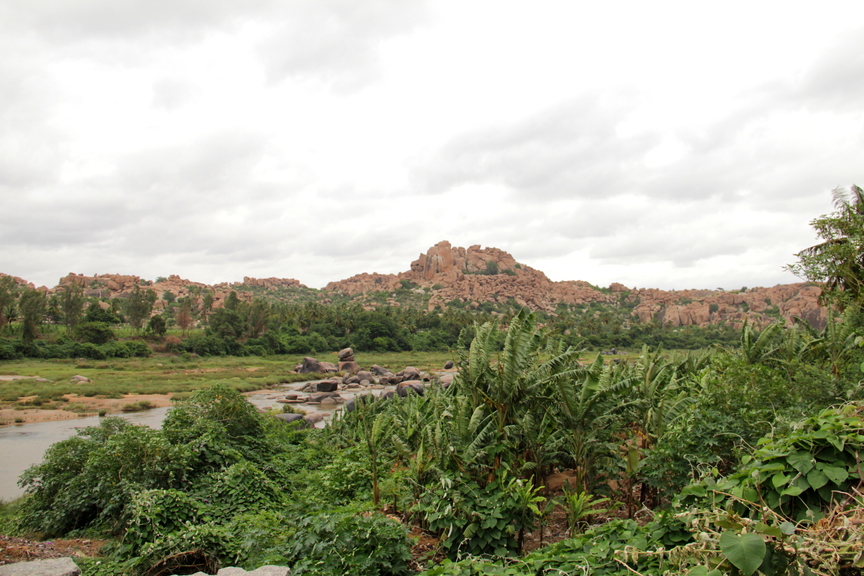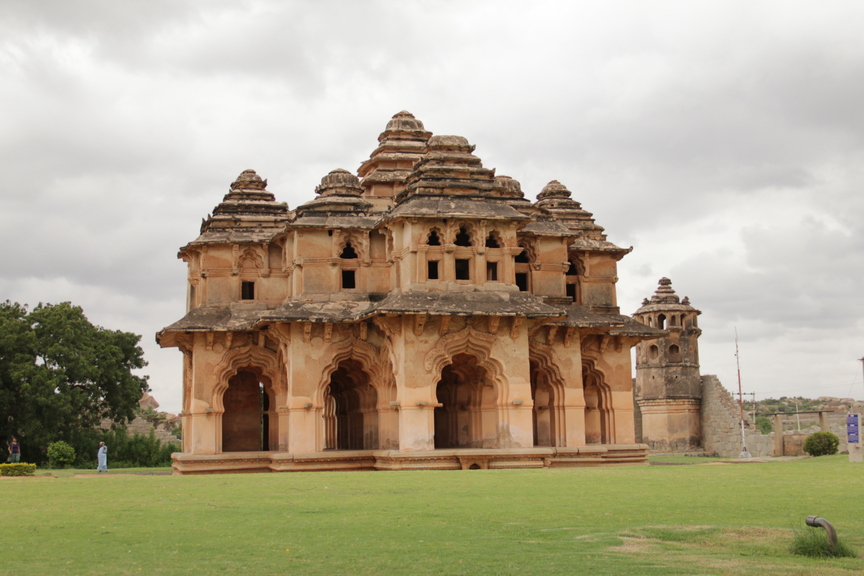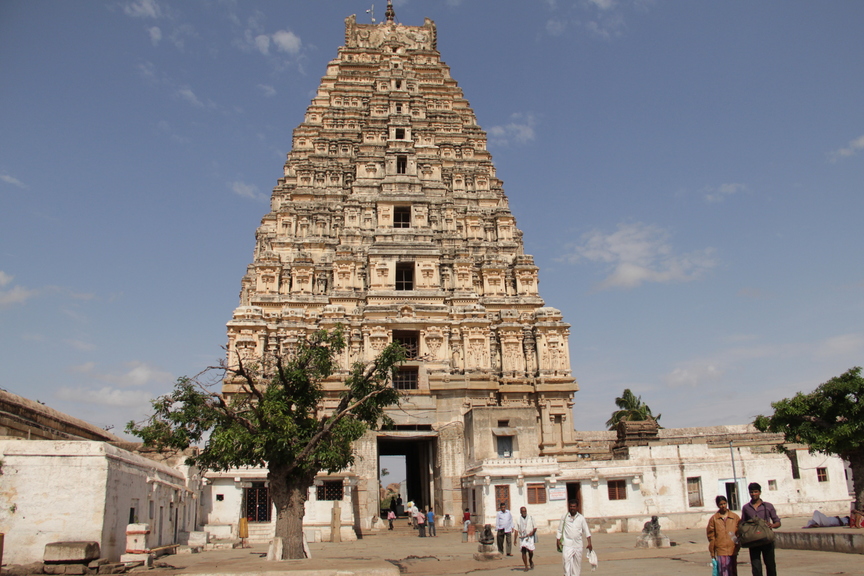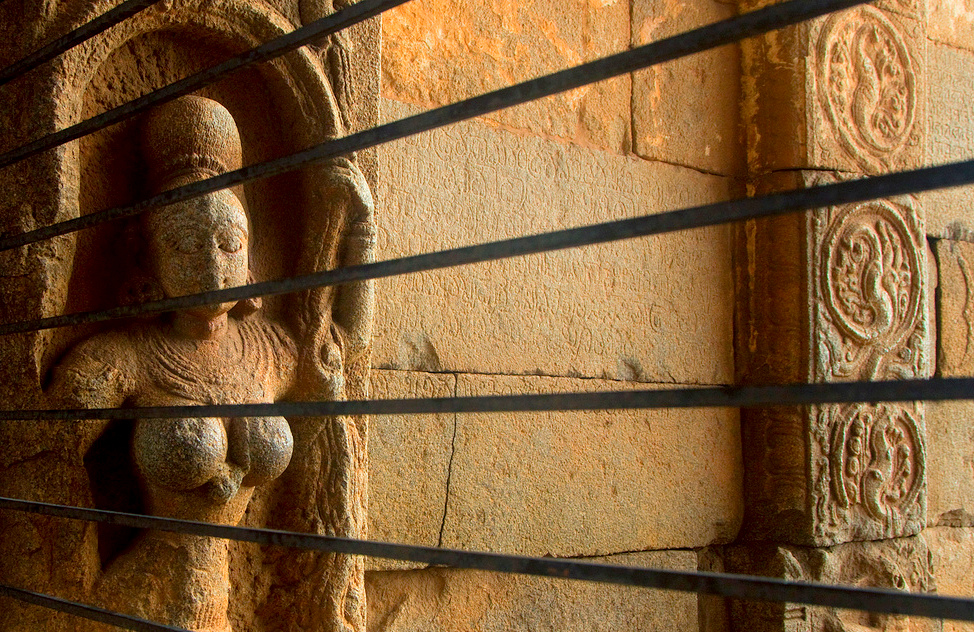Dissected by the brown capillary called Tungabhadra that winds around the boulder-strewn terrain of Hampi the town has the ability to infuse a copious amount of laziness in you. That’s exactly what happened to me on the first day of my visit. I sat at the edge of the lowermost-tiered cemented platform of the Mango Tree Restaurant (unfortunately now shifted from this coveted spot) and watched a lone coracle struggling to maneuver upstream through the frothy water as the sun beat down with extra zeal. The struggle of the boatman was deep in contrast with a relaxed white-throated Kingfisher sitting meditatively still on a rock at the edge of the river. After what seemed like ages, the Kingfisher shifted and swiftly flew to another perch, egging me to shake myself from the gastronomic comatose. So, I finally walked down the main bazaar to hire a cycle and set out for a day of sightseeing.

The main draw of Hampi lies in its stunning array of ruins of temples, living quarters and structures that have survived the vagaries of time. Visiting these weathered bits of history is an odyssey, which gives one a glimpse of architectural and cultural splendor that would have existed in the time of the Vijayanagar Empire that ruled a large part of the Deccan. While I breathlessly hopped from one structure to another, there were some that were decidedly more alluring than the others. The manicured garden of the Lotus Mahal and Elephant Stables was perfect to sit and appreciate the contrast of the pale browns against the lush green. A blend of Hindu and Muslim architectural styles, the Lotus Mahal was probably a rest house for royalty. The royal pachyderms had their own snooze spots close by in a neat row of stables.

Skipping some of the other monuments, I decided to peg the Daroji Sloth Bear Sanctuary in my day, even though it was a never-ending ride of 17km from Hampi town. Immaculately clean and well maintained, the sanctuary is home to 120 sloth bears amongst other animals and can be seen roaming a wide gorge from a watchtower. I arrived just after 2.00 p.m, in time to see the cubs being fed from relatively close proximity.
Dotting the day with the lesser-known as well as iconic monuments was in the plan, so the Vijaya Vitalla Temple could not be missed. For me, the battery operated vehicles to cover the last mile, driven mostly by women was a stronger hook than the temple itself. Built in 1513, the temple is dedicated to Lord Vishnu and was considered an architectural marvel for its musical pillars and extraordinary workmanship. The chariot, inspired by the one in Konark, was actually functional till the authorities cemented it in a few years ago.

Across the temple, the neighbouring village of Anegundi holds sway for the fine work of The Kishkinda Trust for sustainable tourism ideas and inclusion of the local population. It was easy to prop my bike on a dependable coracle and cross over with ease. The Sanapur Reservoir, the village library and Chintamani temple took up the rest of the day for me. Exhausted with the daylong sightseeing, based entirely on pedal power, I sank into a hammock in my guesthouse courtyard in the evening. Slowly the exhaustion ebbed away, making way for an idea of a short trek up to the Matunga Parvath. But I reserved that for the next morning.
Getting There By Train: Book yourself on Hampi Express (Train No.16592) for a convenient overnight trip from Bangalore to Hospet. The journey takes about 9 hours. Expect a fare of Rs 325/- onwards. From Hospet, you can make the 13km journey in a shared (approx Rs 20), private auto (approx Rs 150) or a local bus.
Where to stay: Mowgli Guest House
AC and Non AC basic rooms either face the lush paddy fields or the courtyard. The lounge area doubles up as a restaurant with quintessential Hampi style floor seating and excellent food. (www.mowglihampi.com)
Featured image: Vinoth Chandar, Flickr CC
Follow us on Facebook and Twitter
We deliver good food in trains. Download our mobile app from Google Playstore

